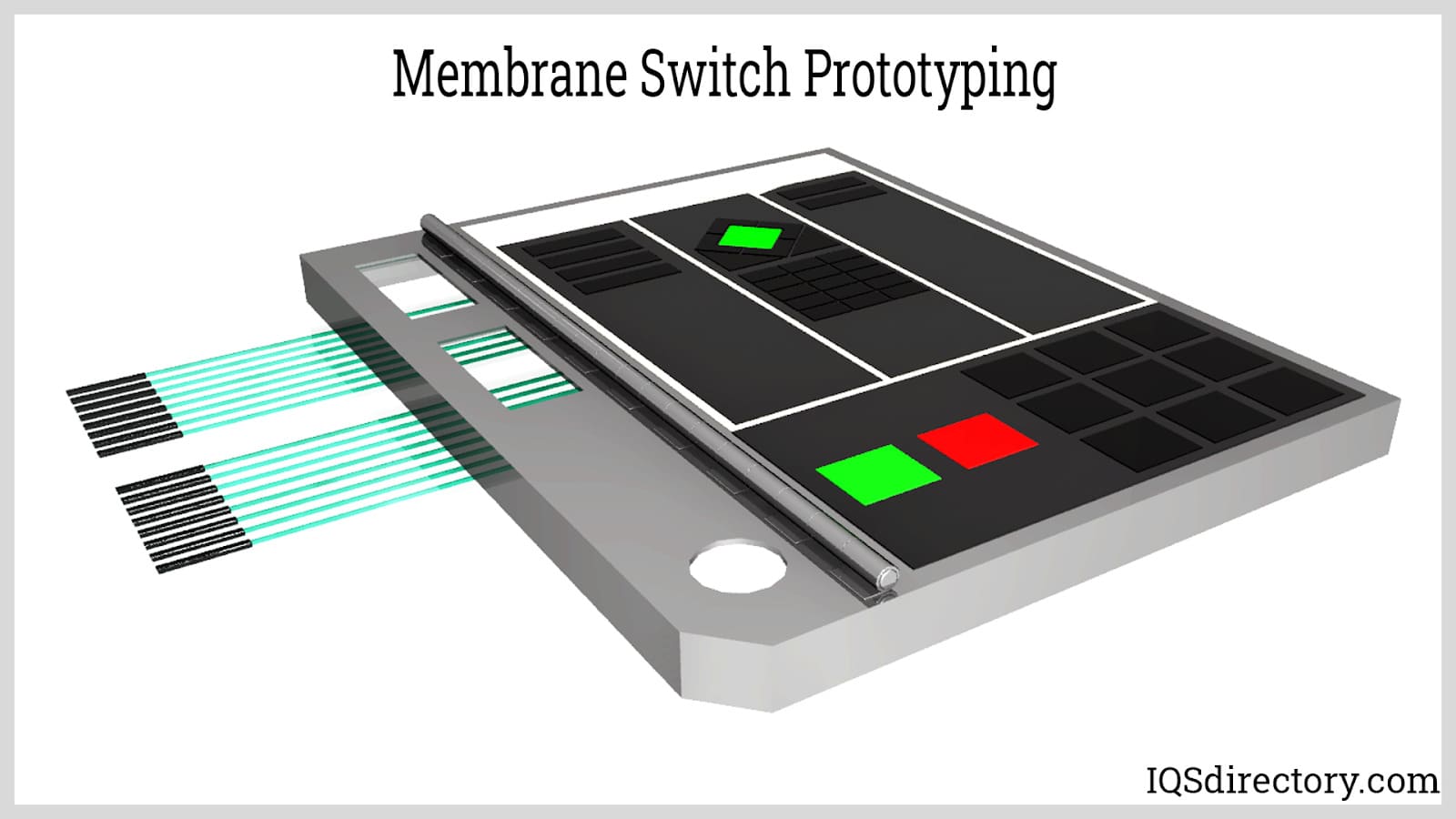Why Membrane Switches Are the Preferred Choice for Compact Devices
Wiki Article
Recognizing Membrane Changes: The Key to Long Lasting and Trusted Controls
Membrane layer switches stand for a vital aspect of modern interface layout, mixing capability with strength in different applications. These versatile elements not only promote customer interaction yet are additionally crafted to endure the roughness of demanding atmospheres, from clinical devices to commercial equipment. Understanding their construction, procedure, and the myriad benefits they provide is necessary for engineers and designers alike. As we explore the details of membrane layer buttons, it becomes clear that their function in enhancing control systems is both profound and complicated, raising inquiries concerning just how finest to leverage their abilities in future technologies.
What Are Membrane Buttons?
Membrane layer switches are an innovative solution in the realm of interface technology, integrating capability and style flawlessly. These gadgets offer as an interface in between customers and digital systems, incorporating several parts into a portable layout. Generally constructed from adaptable, thin layers of products, membrane switches are designed to react to touch, making it possible for individuals to connect with machinery and electronic devices properly.The main elements of a membrane button consist of a published circuit layer, graphic overlay, and a spacer layer that prevents unintended activation. The visuals overlay can be personalized to show brand name identification or individual preferences, enhancing visual appeals while making certain use. Membrane layer buttons are commonly made use of in various applications, consisting of medical gadgets, consumer electronic devices, and commercial devices, owing to their resilience and resistance to ecological factors such as moisture and dust.
One of the vital advantages of membrane switches is their ability to stand up to deterioration, making them perfect for high-traffic environments. In addition, they are lightweight and call for minimal area, permitting for cutting-edge designs in item growth. In general, membrane switches represent a sensible and reliable selection for contemporary electronic user interfaces, marrying technology with user-centric design principles.

Exactly How Membrane Layer Changes Work
The procedure of membrane layer switches hinges on a simple yet efficient mechanism that translates customer input into digital signals. When a user presses the button, the leading layer warps, allowing a conductive element in the circuit layer to make contact with an equivalent conductive pad on the bottom of the visuals overlay.The design of membrane switches can vary, yet they commonly incorporate domes or tactile elements to give responses to the individual, improving the total experience. The products utilized in membrane buttons, such as polyester or polycarbonate, add to their toughness and resistance to environmental factors, including dampness and dirt. Furthermore, the published circuits are typically encapsulated, which shields them from deterioration in time.

Advantages of Membrane Buttons
Among the primary advantages of membrane layer buttons is their adaptability in design, enabling them to be tailored to fulfill details individual demands and aesthetic demands. This versatility encompasses numerous markets, where different shapes, sizes, and shades can be used to enhance individual communication and aesthetic allure.In addition, membrane switches are known for their resilience. Created from durable products, they are resistant to dirt, moisture, and physical wear, which significantly prolongs their life-span contrasted to standard mechanical switches. This longevity makes them particularly suitable for high-traffic settings and applications have a peek at this website requiring longevity.

Additionally, membrane buttons use a streamlined account, resulting in a thinner style that can be integrated into different tools without adding bulk. This function not just enhances the aesthetic appeal however additionally adds to a much more ergonomic product style.

Applications of Membrane Switches
Flexible and easy to use, membrane layer switches locate applications across a large range of sectors, including clinical gadgets, customer electronics, and commercial tools. In the clinical field, these switches are indispensable to tools such as analysis tools, individual tracking systems, and infusion pumps, where dependability and convenience of cleaning are crucial. Their ability to preserve and withstand severe atmospheres functionality makes them excellent for such applications.In consumer electronics, membrane buttons are utilized in products like microwaves, washing machines, and remote controls - membrane switch. Their smooth design permits for user-friendly interface, enhancing the overall individual experience while providing durability and resistance to deterioration
Commercial devices also gains from membrane layer switches, especially in control panels for equipment and automation systems. These switches use security against dirt and wetness, ensuring consistent performance in challenging environments. In addition, their personalized functions enable producers to customize them to details functional requirements, enhancing effectiveness and functionality.
Picking the Right Membrane Switch Over
When choosing a membrane switch, it is important to think about numerous elements that affect efficiency and suitability for specific applications. The main factors to consider consist of ecological conditions, tactile feedback, sturdiness, and layout specs.
First, evaluate the operating atmosphere; switches revealed to dampness, chemicals, or extreme temperatures require details products to make sure long life and functionality. Next hop over to here off, evaluate the demand for responsive responses. Depending upon individual interaction, some applications might profit from a tactile action to confirm activation, while others may choose a non-tactile style for aesthetic factors.
Longevity is one more essential aspect; membrane layer switches ought to be developed to stand up to frequent usage, impacts, and abrasion. Make certain the chosen button can sustain the expected lifecycle, especially in high-usage circumstances.
Final Thought
In conclusion, membrane layer switches serve as necessary parts in the design of trusted and long lasting control systems across various industries. The versatility of membrane switches permits for customized services that meet specific functional requirements, reinforcing their importance in modern innovation.Membrane changes represent a vital element of contemporary user interface design, blending capability with durability in numerous applications.Membrane buttons are a sophisticated remedy in the world of individual interface modern technology, incorporating performance and design seamlessly. Commonly constructed from versatile, thin layers of products, membrane layer switches are made to respond to touch, making it possible for customers to interact with equipment and electronic devices successfully.
The design of membrane layer buttons can differ, however they typically include domes or responsive elements to provide comments to the customer, enhancing the general experience.In conclusion, membrane layer switches serve as necessary parts in the layout of sturdy and trustworthy control systems across different markets.
Report this wiki page